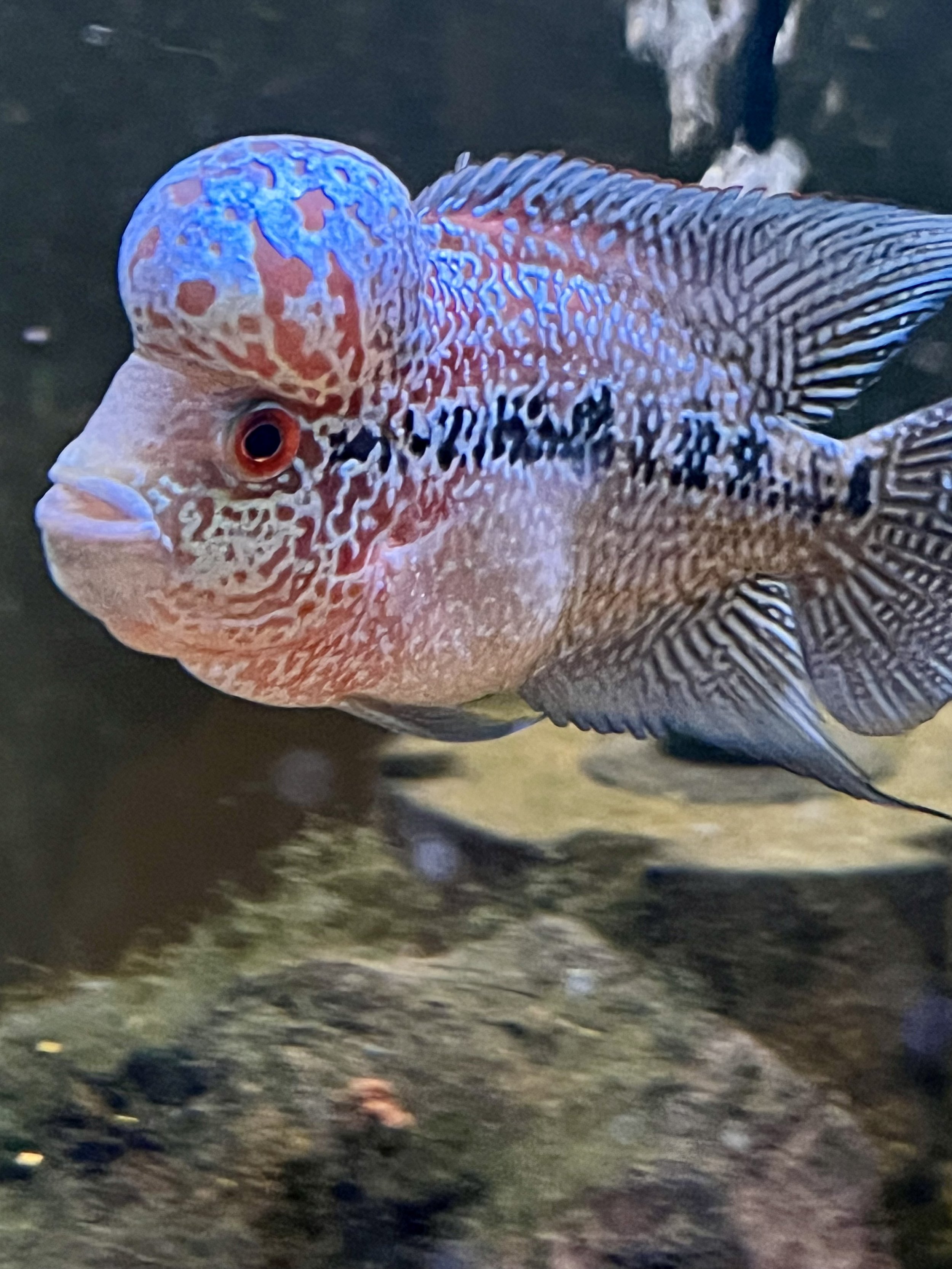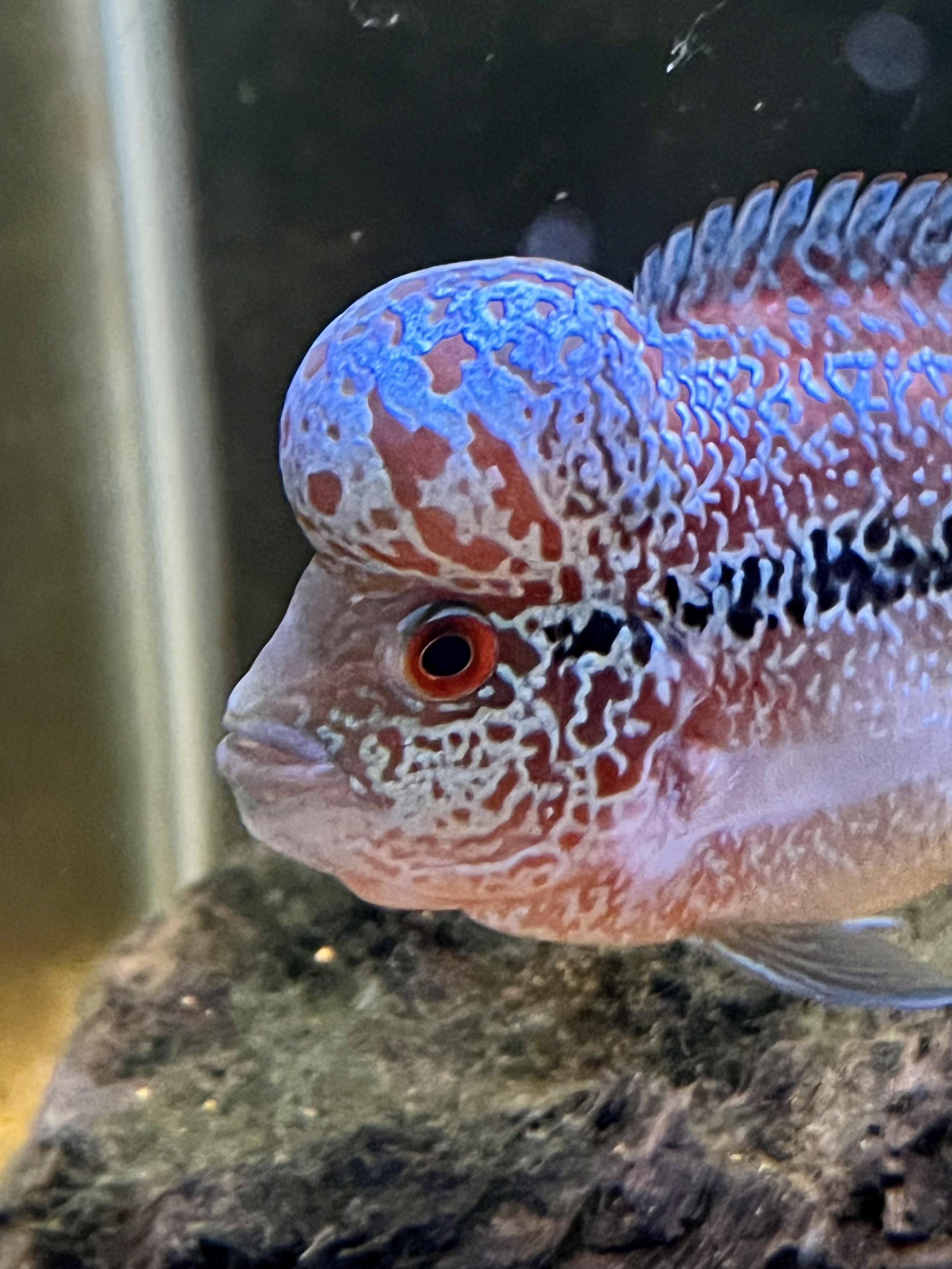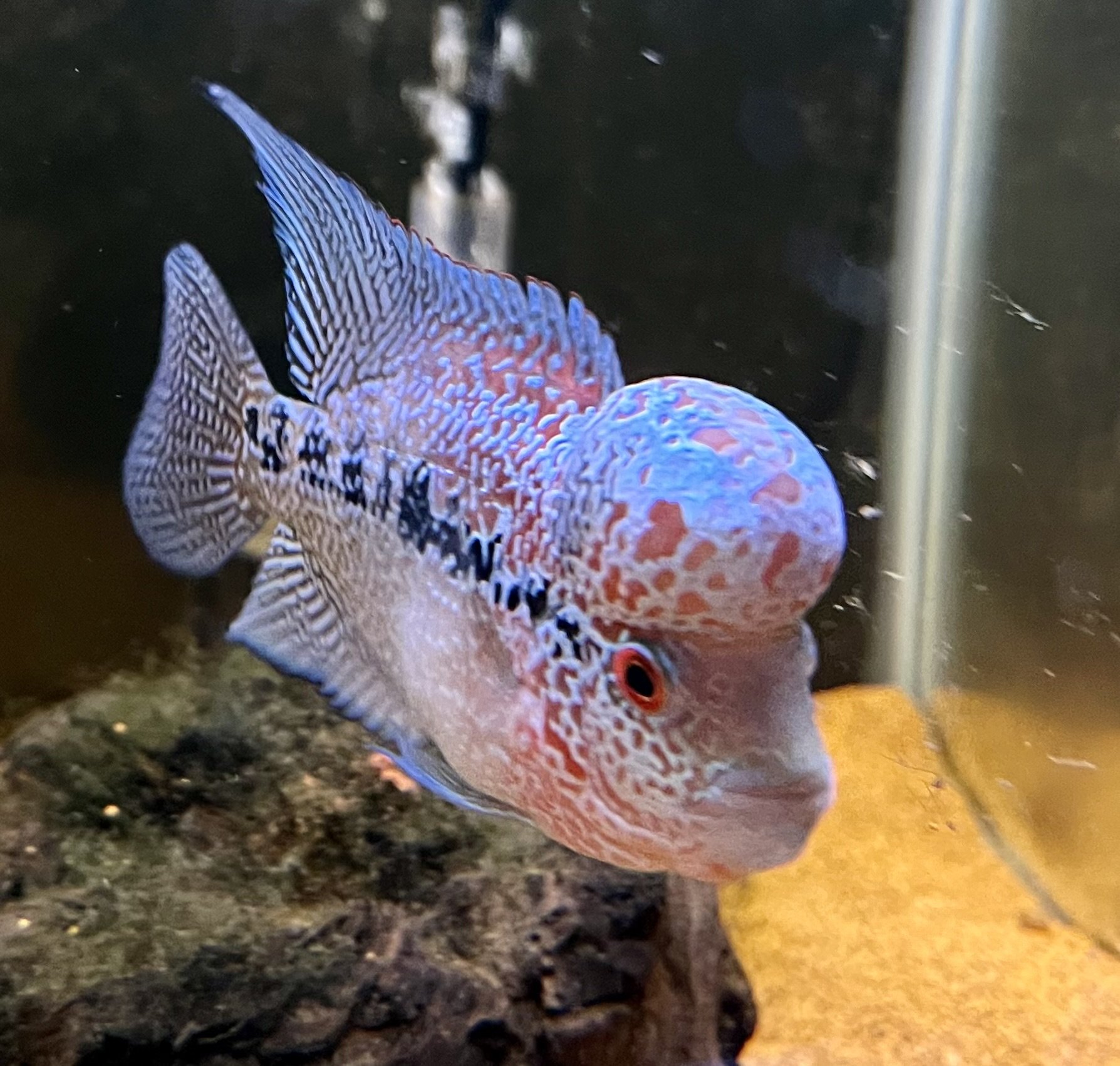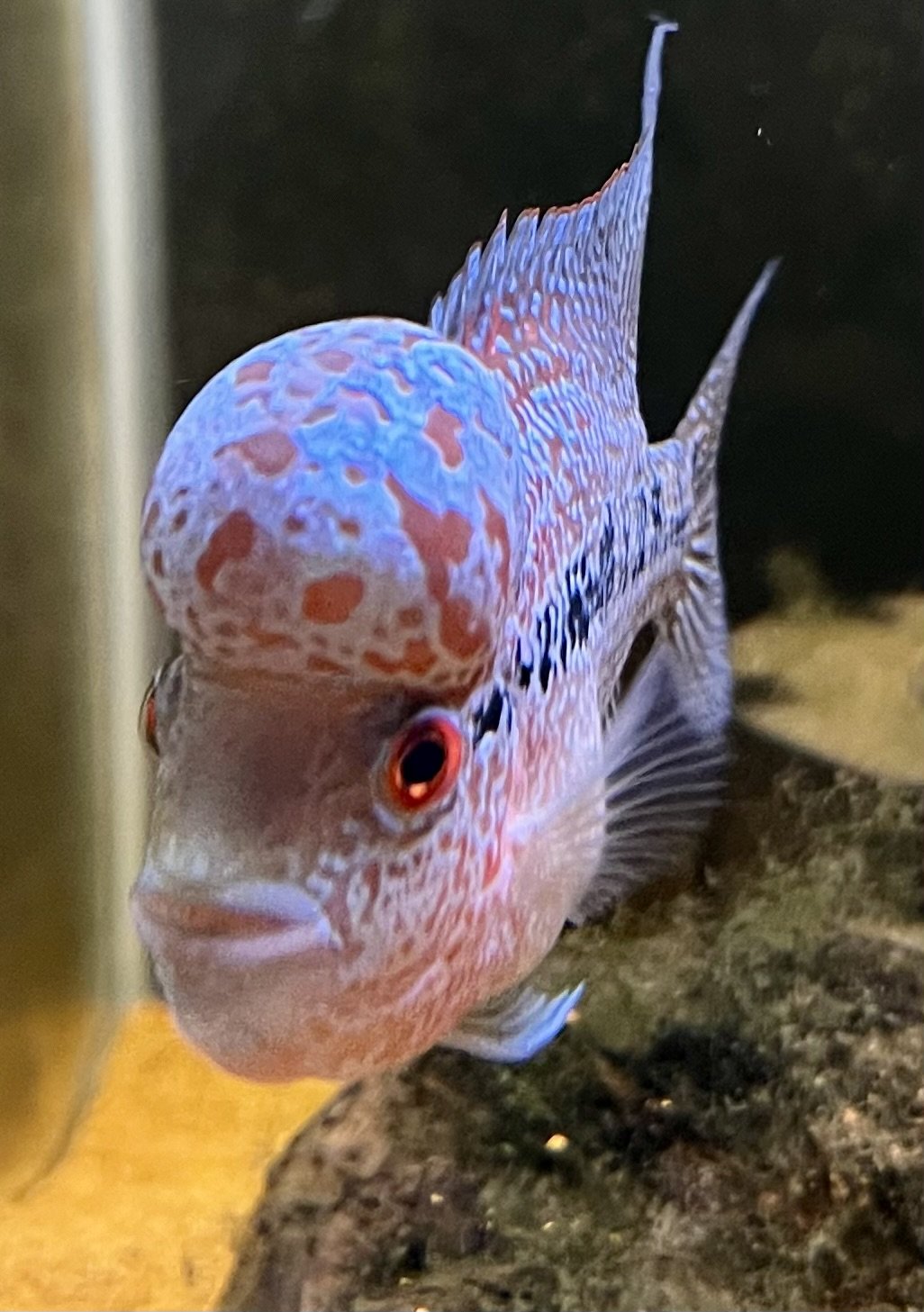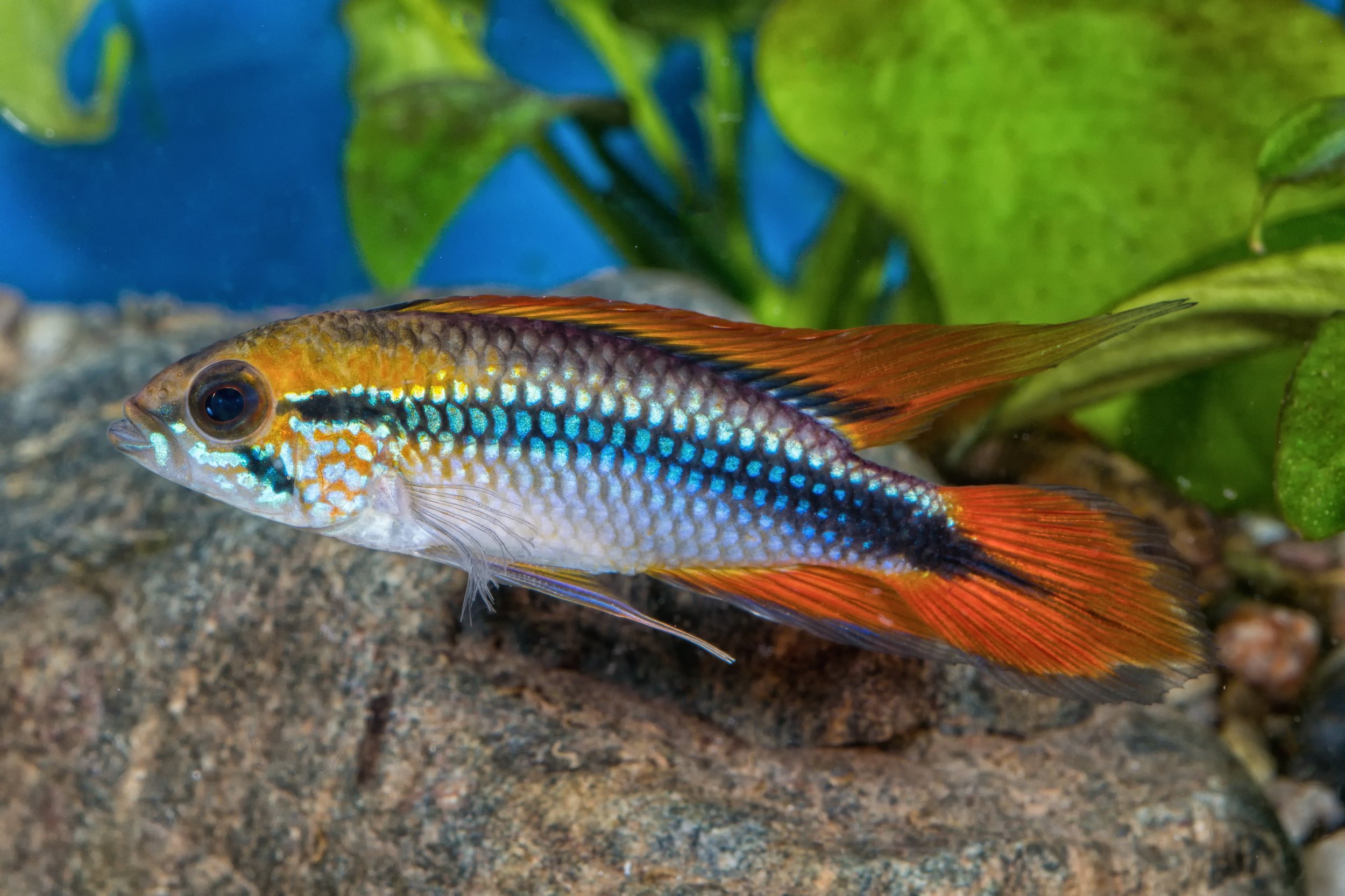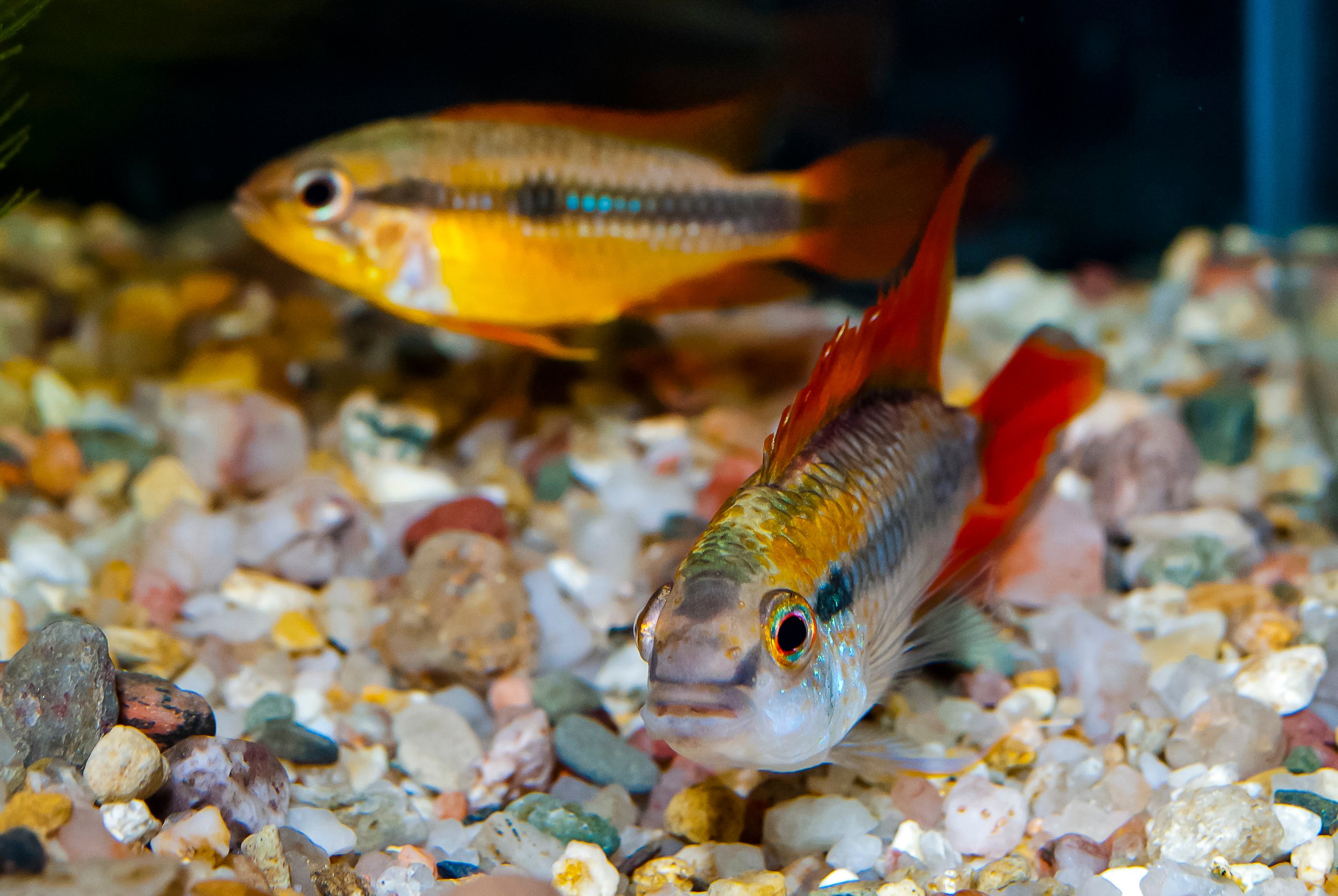 Image 1 of 3
Image 1 of 3

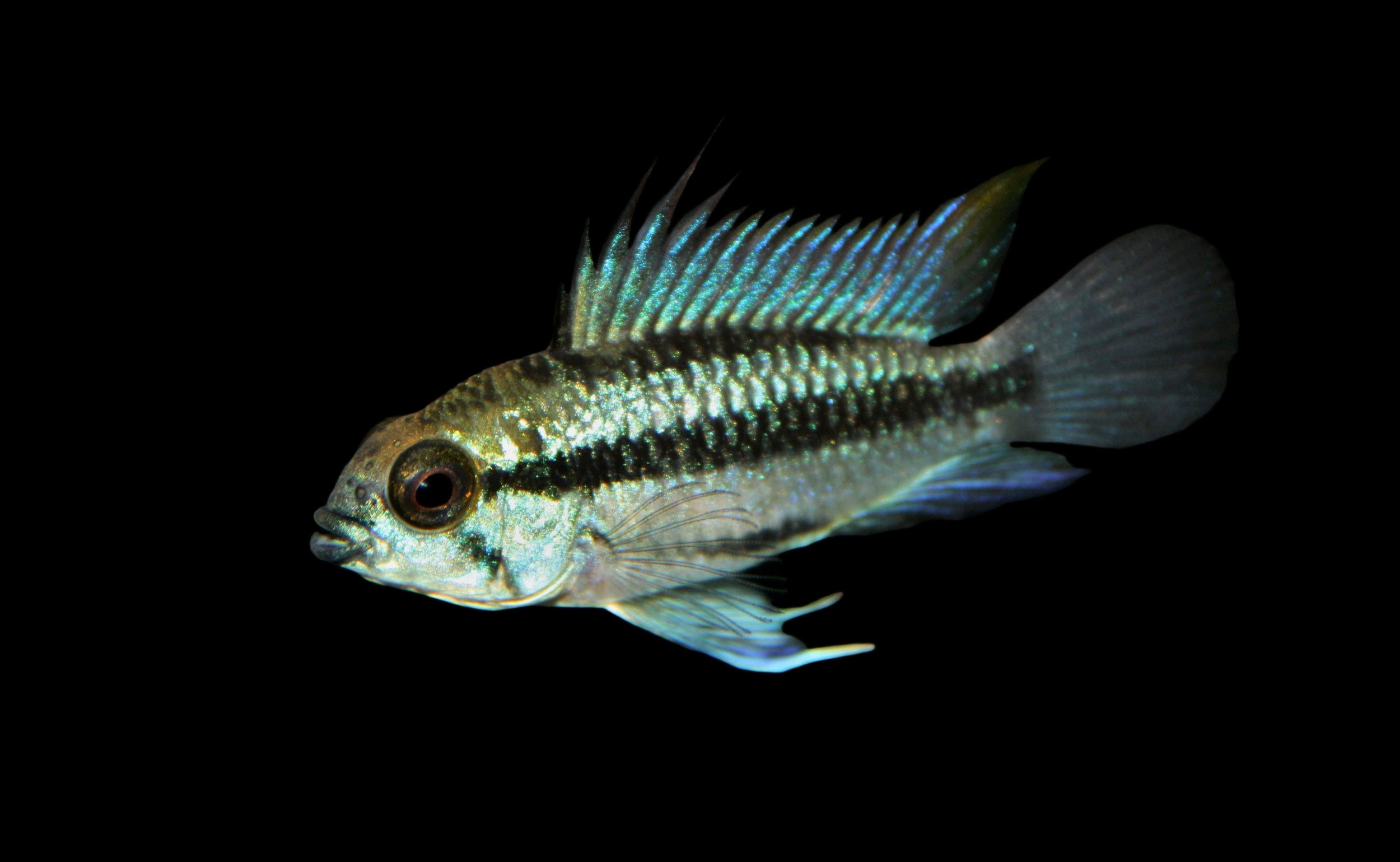 Image 2 of 3
Image 2 of 3

 Image 3 of 3
Image 3 of 3




Apistogramma Trifasciata-S UNSEXED
The Apistogramma trifasciata, commonly known as the Three-Striped Apistogramma, is a striking and highly sought-after freshwater fish species prized by aquarists for its vibrant colors, intriguing behavior, and relative ease of care. Native to the slow-moving waters of South America, particularly in the Paraguay River basin, these dwarf cichlids make a captivating addition to well-maintained aquariums.
Physically, Apistogramma trifasciata is renowned for its vivid and colorful appearance. Males typically exhibit a dazzling array of colors, including shades of blue, yellow, and green, with three distinctive horizontal stripes running along their sides. The dorsal fin is often elongated and adorned with striking patterns, while the caudal fin may display vibrant red or blue accents. Females are generally more subdued in coloration, often showing a more uniform yellow or brown hue with the characteristic three stripes. Mature specimens typically reach lengths of around 2.5 to 3 inches (6 to 7.5 centimeters).
In aquariums, Apistogramma trifasciata thrive in well-planted tanks with plenty of hiding spots provided by rocks, driftwood, and dense vegetation. These fish appreciate a calm environment with gentle water flow to mimic their natural habitats of slow-moving rivers, creeks, and floodplains. Due to their relatively peaceful nature, they can be kept with other small, non-aggressive fish species, making them suitable for community tanks. However, during breeding periods, males can become territorial, so providing ample space and hiding spots is crucial.
Water parameters for Apistogramma trifasciata should closely resemble those of their native environment. They prefer slightly acidic to neutral water with a pH range of 6.0 to 7.0 and temperatures between 75 to 82°F (24 to 28°C). Maintaining stable water conditions with regular water changes and good filtration is essential for their health and well-being.
Feeding Apistogramma trifasciata is relatively straightforward, as they are omnivorous and will accept a variety of foods. They eagerly consume high-quality flakes, pellets, and granules, as well as live or frozen foods such as bloodworms, brine shrimp, and daphnia. Providing a varied diet ensures they receive all the necessary nutrients for optimal health and vibrant coloration.
Breeding Apistogramma trifasciata in captivity is possible and can be a rewarding experience for aquarists. Males display vibrant colors and engage in courtship behaviors to attract females. After spawning, the female typically guards the eggs, which are laid in a secure location such as a cave or under a leaf. The eggs hatch within a few days, and the fry can be raised on infusoria or other microscopic foods until they are large enough to consume baby brine shrimp or finely powdered fry food.
Overall, the Apistogramma trifasciata is a captivating and valuable addition to freshwater aquariums, prized for its stunning appearance, peaceful nature, and fascinating behavior. With proper care and attention to their specific requirements, these beautiful dwarf cichlids can thrive and bring joy to aquarists of all levels of experience, enhancing the beauty and vibrancy of any aquatic environment.
The Apistogramma trifasciata, commonly known as the Three-Striped Apistogramma, is a striking and highly sought-after freshwater fish species prized by aquarists for its vibrant colors, intriguing behavior, and relative ease of care. Native to the slow-moving waters of South America, particularly in the Paraguay River basin, these dwarf cichlids make a captivating addition to well-maintained aquariums.
Physically, Apistogramma trifasciata is renowned for its vivid and colorful appearance. Males typically exhibit a dazzling array of colors, including shades of blue, yellow, and green, with three distinctive horizontal stripes running along their sides. The dorsal fin is often elongated and adorned with striking patterns, while the caudal fin may display vibrant red or blue accents. Females are generally more subdued in coloration, often showing a more uniform yellow or brown hue with the characteristic three stripes. Mature specimens typically reach lengths of around 2.5 to 3 inches (6 to 7.5 centimeters).
In aquariums, Apistogramma trifasciata thrive in well-planted tanks with plenty of hiding spots provided by rocks, driftwood, and dense vegetation. These fish appreciate a calm environment with gentle water flow to mimic their natural habitats of slow-moving rivers, creeks, and floodplains. Due to their relatively peaceful nature, they can be kept with other small, non-aggressive fish species, making them suitable for community tanks. However, during breeding periods, males can become territorial, so providing ample space and hiding spots is crucial.
Water parameters for Apistogramma trifasciata should closely resemble those of their native environment. They prefer slightly acidic to neutral water with a pH range of 6.0 to 7.0 and temperatures between 75 to 82°F (24 to 28°C). Maintaining stable water conditions with regular water changes and good filtration is essential for their health and well-being.
Feeding Apistogramma trifasciata is relatively straightforward, as they are omnivorous and will accept a variety of foods. They eagerly consume high-quality flakes, pellets, and granules, as well as live or frozen foods such as bloodworms, brine shrimp, and daphnia. Providing a varied diet ensures they receive all the necessary nutrients for optimal health and vibrant coloration.
Breeding Apistogramma trifasciata in captivity is possible and can be a rewarding experience for aquarists. Males display vibrant colors and engage in courtship behaviors to attract females. After spawning, the female typically guards the eggs, which are laid in a secure location such as a cave or under a leaf. The eggs hatch within a few days, and the fry can be raised on infusoria or other microscopic foods until they are large enough to consume baby brine shrimp or finely powdered fry food.
Overall, the Apistogramma trifasciata is a captivating and valuable addition to freshwater aquariums, prized for its stunning appearance, peaceful nature, and fascinating behavior. With proper care and attention to their specific requirements, these beautiful dwarf cichlids can thrive and bring joy to aquarists of all levels of experience, enhancing the beauty and vibrancy of any aquatic environment.
The Apistogramma trifasciata, commonly known as the Three-Striped Apistogramma, is a striking and highly sought-after freshwater fish species prized by aquarists for its vibrant colors, intriguing behavior, and relative ease of care. Native to the slow-moving waters of South America, particularly in the Paraguay River basin, these dwarf cichlids make a captivating addition to well-maintained aquariums.
Physically, Apistogramma trifasciata is renowned for its vivid and colorful appearance. Males typically exhibit a dazzling array of colors, including shades of blue, yellow, and green, with three distinctive horizontal stripes running along their sides. The dorsal fin is often elongated and adorned with striking patterns, while the caudal fin may display vibrant red or blue accents. Females are generally more subdued in coloration, often showing a more uniform yellow or brown hue with the characteristic three stripes. Mature specimens typically reach lengths of around 2.5 to 3 inches (6 to 7.5 centimeters).
In aquariums, Apistogramma trifasciata thrive in well-planted tanks with plenty of hiding spots provided by rocks, driftwood, and dense vegetation. These fish appreciate a calm environment with gentle water flow to mimic their natural habitats of slow-moving rivers, creeks, and floodplains. Due to their relatively peaceful nature, they can be kept with other small, non-aggressive fish species, making them suitable for community tanks. However, during breeding periods, males can become territorial, so providing ample space and hiding spots is crucial.
Water parameters for Apistogramma trifasciata should closely resemble those of their native environment. They prefer slightly acidic to neutral water with a pH range of 6.0 to 7.0 and temperatures between 75 to 82°F (24 to 28°C). Maintaining stable water conditions with regular water changes and good filtration is essential for their health and well-being.
Feeding Apistogramma trifasciata is relatively straightforward, as they are omnivorous and will accept a variety of foods. They eagerly consume high-quality flakes, pellets, and granules, as well as live or frozen foods such as bloodworms, brine shrimp, and daphnia. Providing a varied diet ensures they receive all the necessary nutrients for optimal health and vibrant coloration.
Breeding Apistogramma trifasciata in captivity is possible and can be a rewarding experience for aquarists. Males display vibrant colors and engage in courtship behaviors to attract females. After spawning, the female typically guards the eggs, which are laid in a secure location such as a cave or under a leaf. The eggs hatch within a few days, and the fry can be raised on infusoria or other microscopic foods until they are large enough to consume baby brine shrimp or finely powdered fry food.
Overall, the Apistogramma trifasciata is a captivating and valuable addition to freshwater aquariums, prized for its stunning appearance, peaceful nature, and fascinating behavior. With proper care and attention to their specific requirements, these beautiful dwarf cichlids can thrive and bring joy to aquarists of all levels of experience, enhancing the beauty and vibrancy of any aquatic environment.


